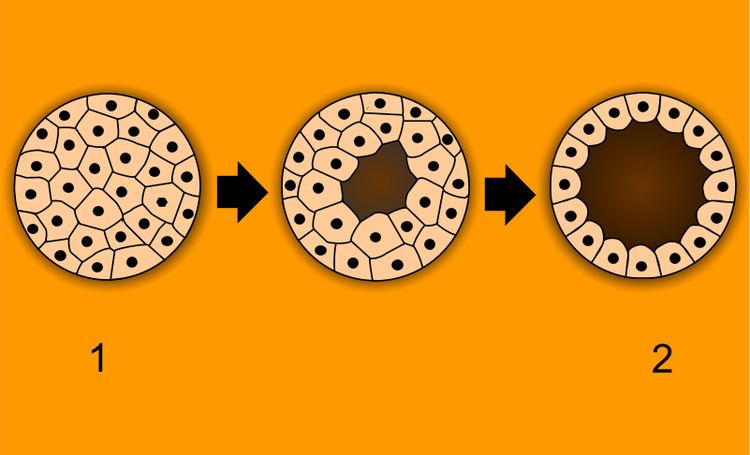Days 3 Gives rise to Blastula, Blastocyst | Precursor Zygote Code TE E2.0.1.2.0.0.11 | |
 | ||
A morula (Latin, morus: mulberry) is an early stage embryo consisting of cells (called blastomeres) in a solid ball contained within the zona pellucida.
A morula is distinct from a blastocyst in that a morula (3–4 days post fertilization) is a 16-cell mass in a spherical shape whereas a blastocyst (4–5 days post fertilization) has a cavity inside the zona pellucida along with an inner cell mass. A morula, if untouched and allowed to remain implanted, will eventually develop into a blastocyst.
The morula is produced by a series of cleavage divisions of the early embryo, starting with the single-celled zygote. Once the embryo has divided into 16 cells, it begins to resemble a mulberry, hence the name morula (Latin, morus: mulberry). Within a few days after fertilization, cells on the outer part of the morula become bound tightly together with the formation of desmosomes and gap junctions, becoming nearly indistinguishable. This process is known as compaction. A cavity forms inside the morula, by the active transport of sodium ions from trophoblast cells and osmosis of water. This results in a hollow ball of cells known as the blastocyst. The blastocyst's outer cells will become the first embryonic epithelium (the trophectoderm). Some cells, however, will remain trapped in the interior and will become the inner cell mass (ICM), and are pluripotent. In mammals (except monotremes), the ICM will ultimately form the "embryo proper", while the trophectoderm will form the placenta and extra-embryonic tissues. However, reptiles have a different ICM. The stages are prolonged and divided in 4 parts.
